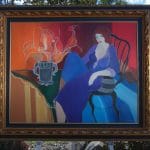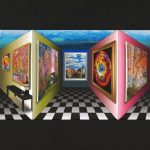‘I Am Always Painting’: A Rare Interview with Artist Itzchak Tarkay
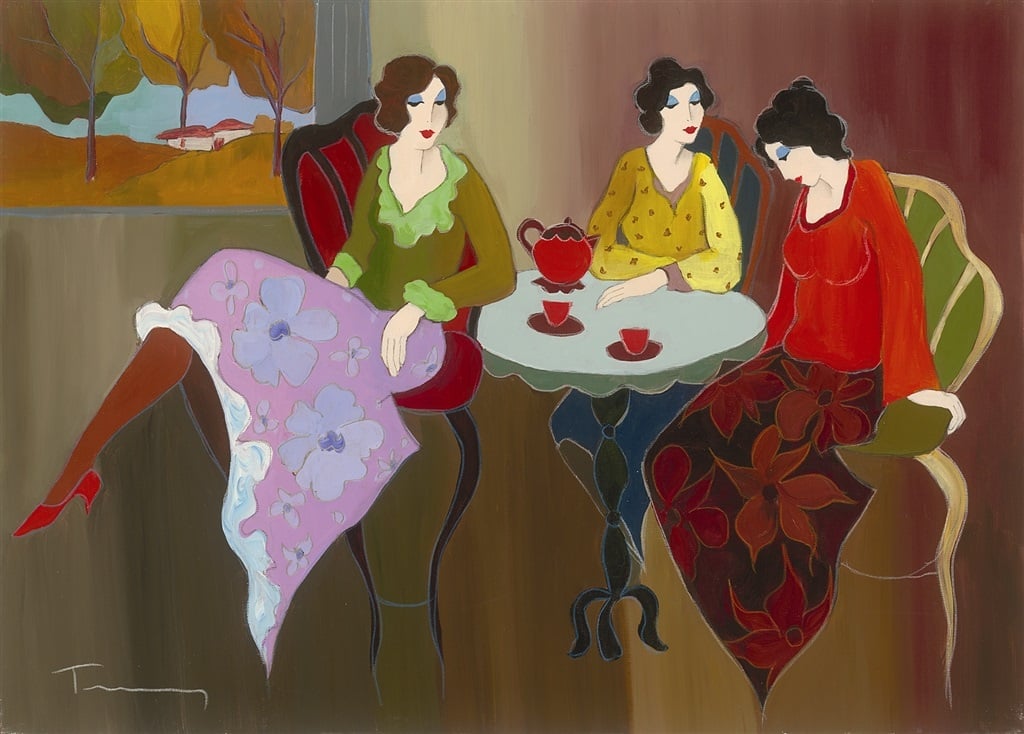
“A Lost Dream” (2006), Itzchak Tarkay
Renowned figurative artist Itzchak Tarkay was famous for avoiding discussions of his art. He was shy and frequently avoided the spotlight.
However, in 2006, after a collectors’ event, Tarkay was open to sitting down with his long-time friend Park West Gallery Director Morris Shapiro and sharing his thoughts about his work and process.
The following is an excerpt from that rare interview:
MORRIS SHAPIRO: How does a Tarkay painting come to life? Can you take us through the process of development?
ITZCHAK TARKAY: I am always painting, which means that even when I’m not painting, I’m painting.
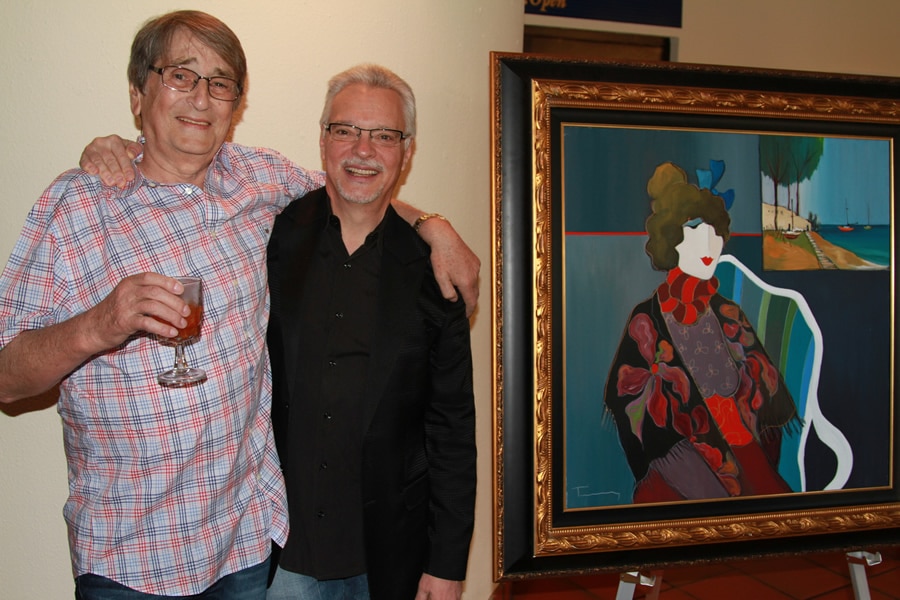
Itzchak Tarkay and Morris Shapiro
TARKAY: I’m always working on the subject. If I see a coffee shop, I think—what can I do with this? Sometimes, if I have a sketchbook on me, I can do very fast sketches. Or I take pictures, if I have a camera. Then I can put everything all together in my studio.
Color is not under my control. Color is always coming to me, almost always, from the inside. I can never visualize the final picture. I don’t have any control over why I place a dab of red here or why I place a splash of green over there—it just happens. Some colors always stay together, because they aid one another, and they live together quite nicely.
The problem in art is knowing when your work is finished. That is the biggest problem for every painter. When is the “That’s it!” moment?
My friends are always coming to see my work. Or my wife, and she says, “Oh look! It’s finished… No?”
In my mind, I think, “No! I have to work more.” But I ask her anyway… “Why do you think it’s finished?”
And she’ll say, “Because you don’t need anything else. It’s enough.”
Sometimes I take this advice and sometimes not. Nobody can tell you when it’s finished, really. You have to tell it to yourself.
But the question about a finished work is a question mainly about the mood. What was the mood in that time? What is the mood today? What is your feeling? Sometimes you are happy and everything is going nicely and you’re optimistic. Sometimes you think that something is not right. It’s everybody.
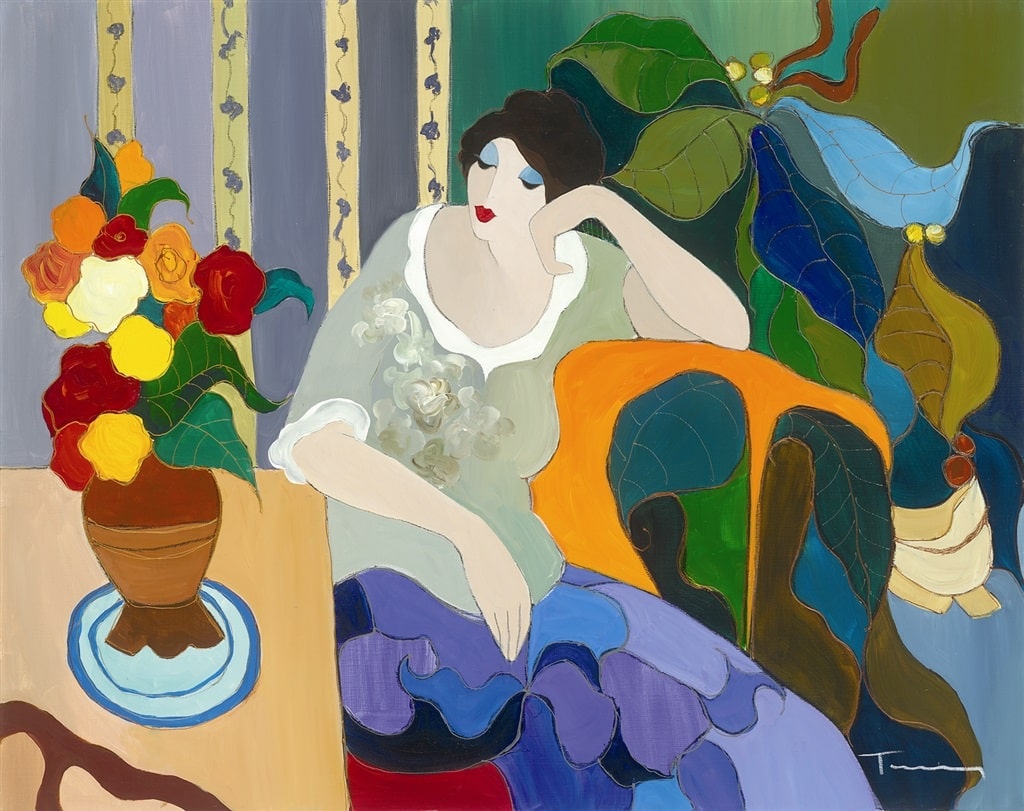
“Simply Dreaming” (2007), Itzchak Tarkay
SHAPIRO: It’s life.
TARKAY: Life! It’s life, yes. Sometimes I have big fights with myself, but I am the winner. (Laughs)
SHAPIRO: You’re always the winner—you’re the painter. You’re the winner when you finish the painting.
TARKAY: When I finish the painting, I’ve won.
So this, generally, is the way. Of course, every painting has its own story. None are entirely the same. One may start with a good time, the other one starts with a bad mood. Mood is a very important thing in painting. That’s a big part of the final job.
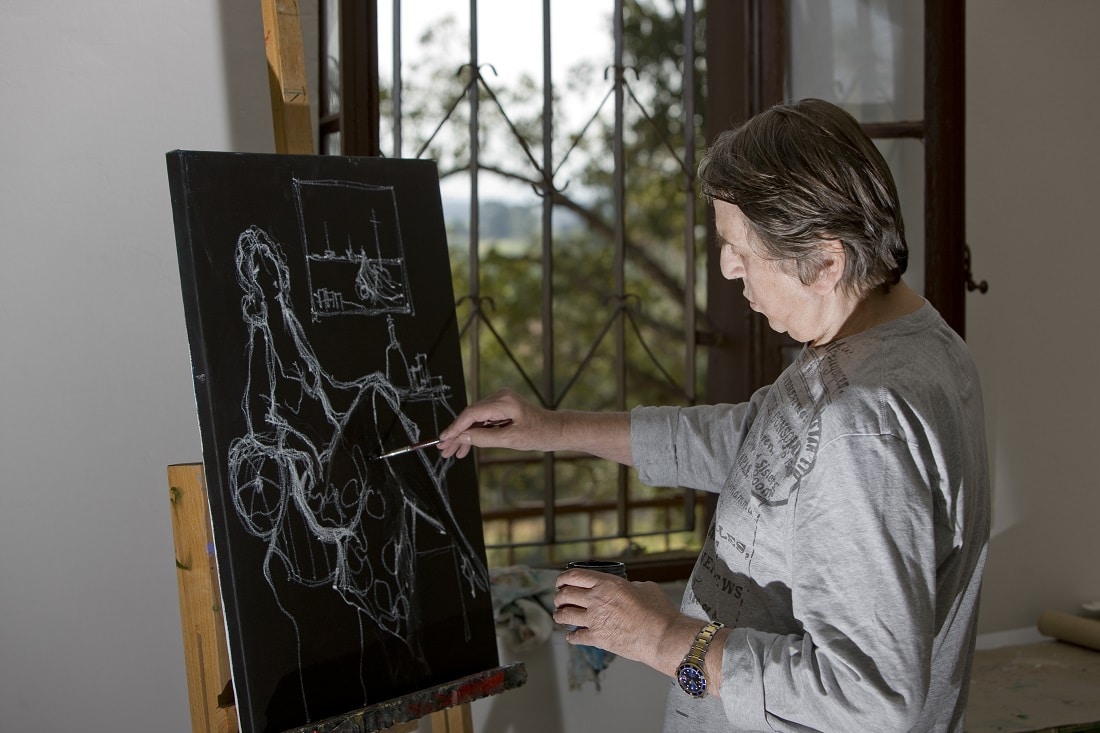
SHAPIRO: Matisse said that he knew his painting was finished when if he added one more thing, or if he took something out, it would fall apart. I know that Matisse is one of your inspirations.
When you look at a Matisse painting, what feeling do you have?
TARKAY: I am jealous. I am jealous because I can see in his work that the color and everything comes easy. But you don’t know exactly what he’s thinking when he’s drawing. Everything is covered with colors, so it becomes difficult to know him.
Picasso—you get to know very well.
Picasso would come to see Matisse and he covered everything up, because Picasso would go into the studio and, if he saw anything, he would make it his way. Of course, not a copy. Picasso deals with the bigger problem, too—the problem of what to paint.
I paint a lot. I’ve painted for many years and many pieces. Finding a subject is difficult.
SHAPIRO: You have abundant subjects. It never seems like you have a problem finding subjects.
TARKAY: But this is after many, many times thinking about what to paint. What to do? And also how not to copy yourself.
This is a problem, because sometimes you find some nice figures or something and people love it. It’s difficult not to keep copying and stay on the safe side of life. People will dislike or love an old style, or your first style, so you make it again, the same, to be on the safe side.
It’s a problem. What to put on the canvas.
SHAPIRO: I think I understand. There’s a struggle between what you know the public will like and what you want to continue to create that’s new.
TARKAY: Exactly.
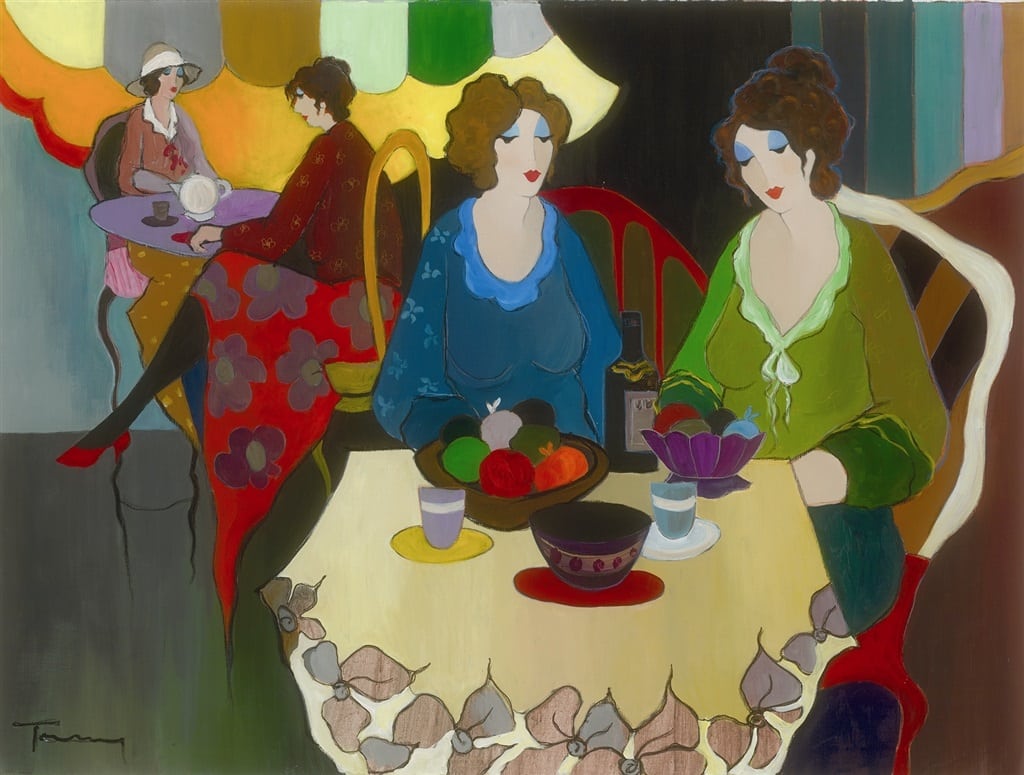
“Friendly Attribution” (2006), Itzchak Tarkay
SHAPIRO: Itzchak, I want to say some artist names to you, famous artists. And then I want you to tell me whatever comes to mind, your impressions of those artists, alright?
TARKAY: He’s great. Great.
It’s the verticals, it’s the line, the line work, the sketch work. And I like his colors because they talk to me. I love his subjects—what he painted in that time period. Always women—in this place or another place.
I can’t exactly explain “why.” Maybe I don’t even know why truly. He’s just good.
SHAPIRO: He’s very good.
Tell me about Picasso.
TARKAY: Oh, he’s a genius—he’s a genius! What he does is perfect. All of his periods—the blue, the pink, and then his Cubist works with Braque. Everything he does is perfect. It’s a talent that is just once in a life.
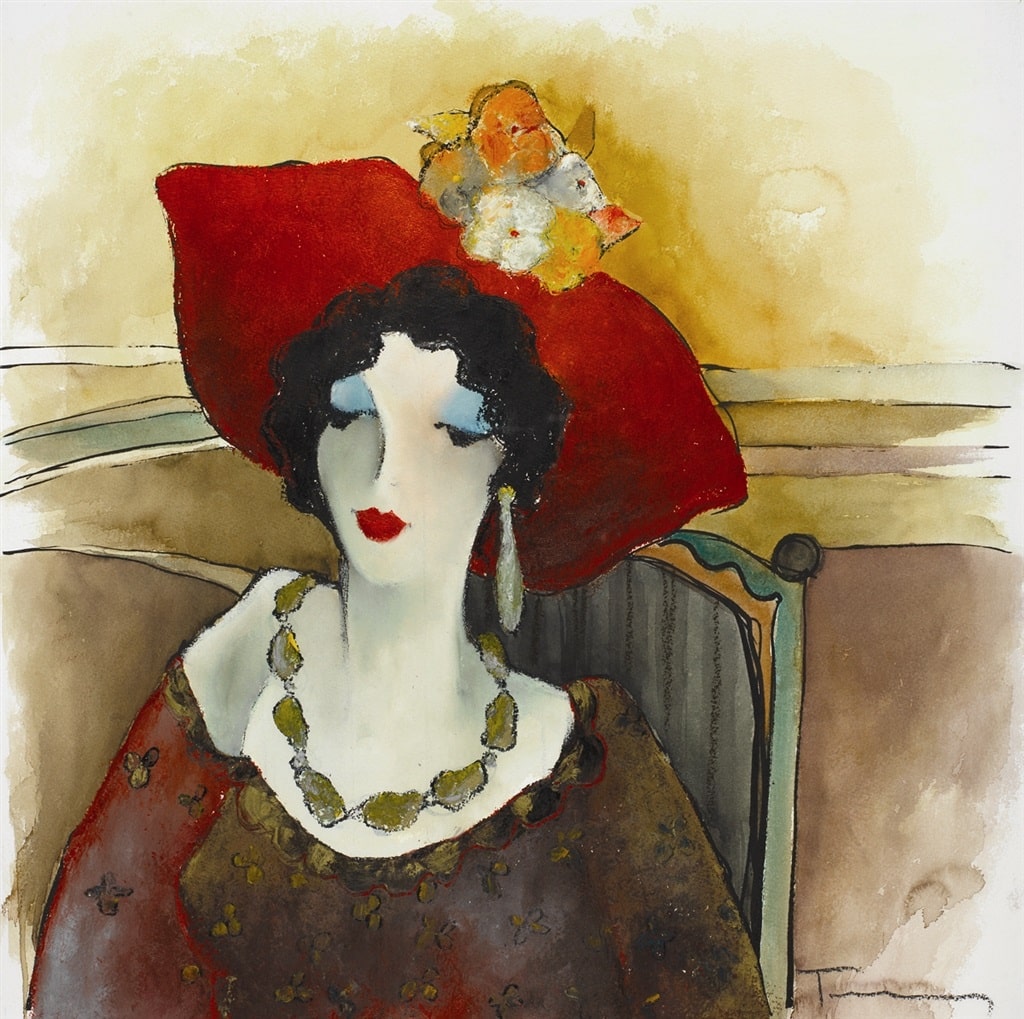
“Proper Attire” (2007), Itzchak Tarkay
SHAPIRO: You can’t really grasp it.
Tell me about your favorite Impressionist.
TARKAY: Toulouse-Lautrec, Matisse, and I very much like Gauguin.
Gauguin’s colors are beautiful. I don’t prefer his types of women, but that is his problem. The colors, though—they are great.
I can’t recall exactly, but most of the Impressionist artists in their time were a very serious influence for me. This era was very important.
SHAPIRO: How do you feel about Cézanne?
TARKAY: Oh, Cézanne! I saw an exhibition in Paris with Cézanne and Pissarro. The exhibition was fantastic. Beautiful. They both painted the same subjects, but of course, in different ways.
It’s interesting to see how two great artists can see the exact same thing differently. Different, yet similar.
SHAPIRO: So tell us about your becoming—how did you become an artist?
TARKAY: It’s a good question, but it just happened. It wasn’t planned. You never have an exact plan that says: “This year I do this and next year I want to do something else.”
It happened.
After being a full professional in art, it came after a few years. In the beginning, I took only a half day off a week for my painting. And then it was not enough. So soon I took one day from the week, and then added Friday and Saturday. So then I had three days to paint. Not enough. So I took another day.
It came slowly.
And then, after a few years, I needed some extra money. So I found my first art dealer and he bought everything. Everything!
And that was the way of becoming, to the point where I’m opposite of you now.
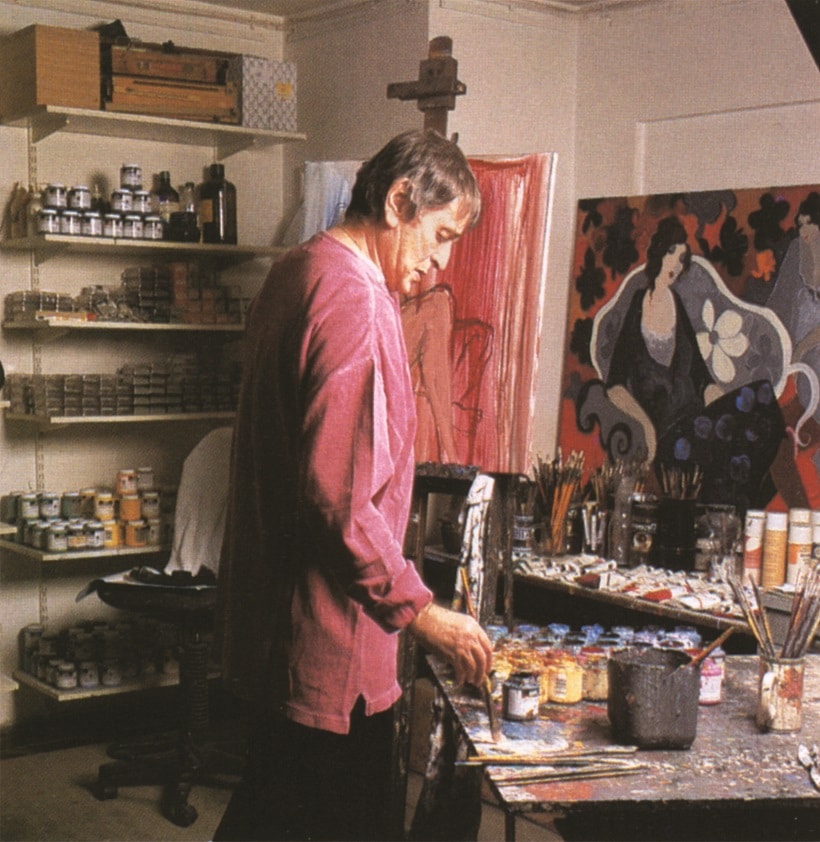
SHAPIRO: Tell us about your relationship with Park West Gallery and Albert [Scaglione, Park West’s Founder and CEO].
TARKAY: It started at the first Artexpo in New York City. The exhibition was only five days. The first day was for the collectors and galleries. Albert came by with you, and I heard him say, “It’s the first day—you watch what is in his booth.” The next day—you and Albert came together—nothing. The third day—you bought everything. All my prints. That was the beginning.
And now, you can see my work today, many years after.
SHAPIRO: Yes. And, for 20 years, now you’ve been the most famous figurative artist in the world. It’s you!
TARKAY: Thank you.
SHAPIRO: I want to know about your home, what you do every day, about your family, and living in Israel. Tell me about your life—what is a day in the life of Tarkay?
TARKAY: I start in the studio. If I’m in a bad mood, I make a coffee and perhaps a cigarette. And slowly, slowly, you go to the easel. The start putting paint here and there, and by 10 o’clock you see that you are involved with everything on the canvas.
So that’s the beginning of a normal morning. I work, normally. I used to work a lot of hours—maybe 10 or 12 hour days. Today, I work eight hours daily, for five days. But now I’m older than 20 years ago.
And I keep working and working. Sometimes I take a rest for a few hours, eat something, spend time with the kids when they were small. I have two children. I spend time with my kids and my wife. But normally, if somebody needs me, they come to the studio. That is the place where I spend my time.
Everything is around this.
You have to do many things, and we have our free time too. You have to work in the studio, you paint in the studio, and, when I have free time, I go with the family, relatives, friends. So I have time for everything!
Then I come to the United States to talk to you!
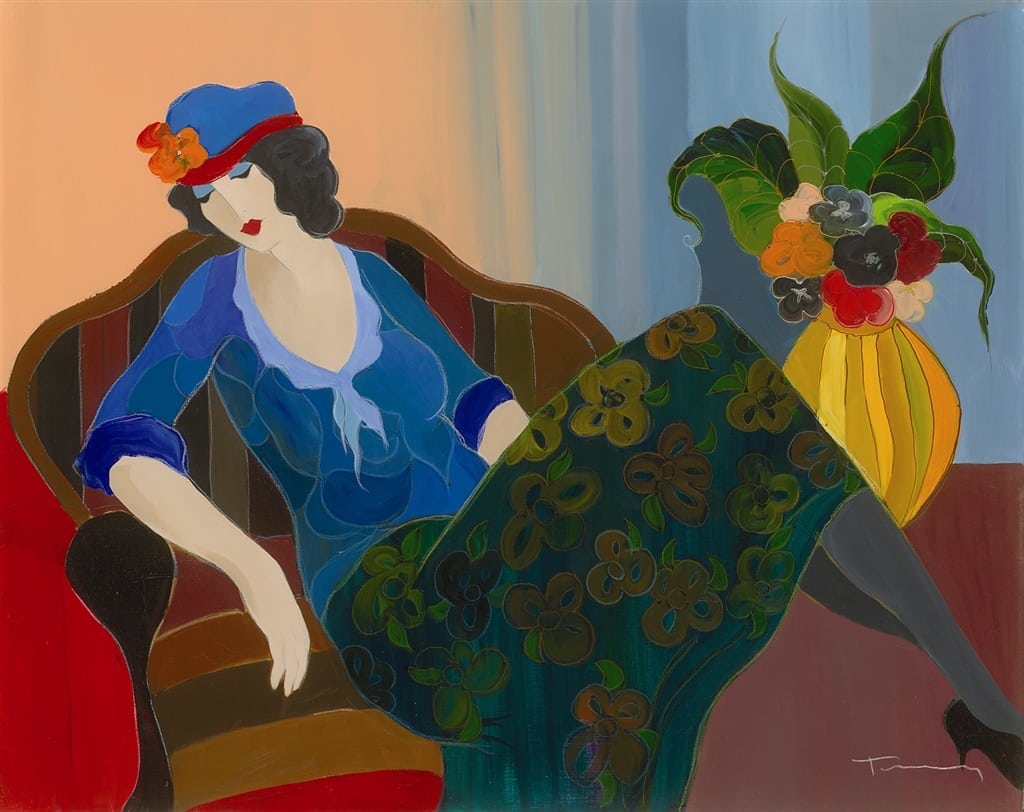
“A Break from Tea” (2006), Itzchak Tarkay
SHAPIRO: Tell me what it’s like for you to come to the United States, to Park West Gallery, meeting all these people who love your work. That must be a really great feeling for you as an artist. It’s such a lonely profession. So to be here with all these people, isn’t it a great experience for you?
TARKAY: It’s very difficult for me.
SHAPIRO: It’s difficult?
TARKAY: It’s very difficult for me. It’s difficult to explain myself because my language is a bit poor.
This is my feeling.
I’m ashamed to talk with many people.
This is my nature.
I have a sister. She’s a doctor and can give a speech to 200 to 400 people at a university, and I’m talking with 20 people in a room and it’s a problem. And we’re from the same family!
But I’m very proud that people love me.
I had an exhibition in Chicago and along came a woman, and she comes to me and thanks me for everything saying, “Thank you Tarkay! Thank you, thank you. I love you. Thank you again.”
So I asked her, “Tell me why you love me. You bought this piece, you own it. In this case, you have to love the gallery owner who sold it to you!”
She continued on, “No I love you. I’ll tell you why—I wake up in the morning. I make myself a coffee. I put the coffee in the corner, where I am sitting. And on the wall is hanging one of your works. So I drink the coffee and see the work and enjoy it. I have a good feeling. I start every day very nicely, because I saw you, and your colors, and your optimism. And that’s the reason I love it.”
I thanked her, of course. And I agree with her.
It’s the stuff of many small things. It’s not a philosophy.
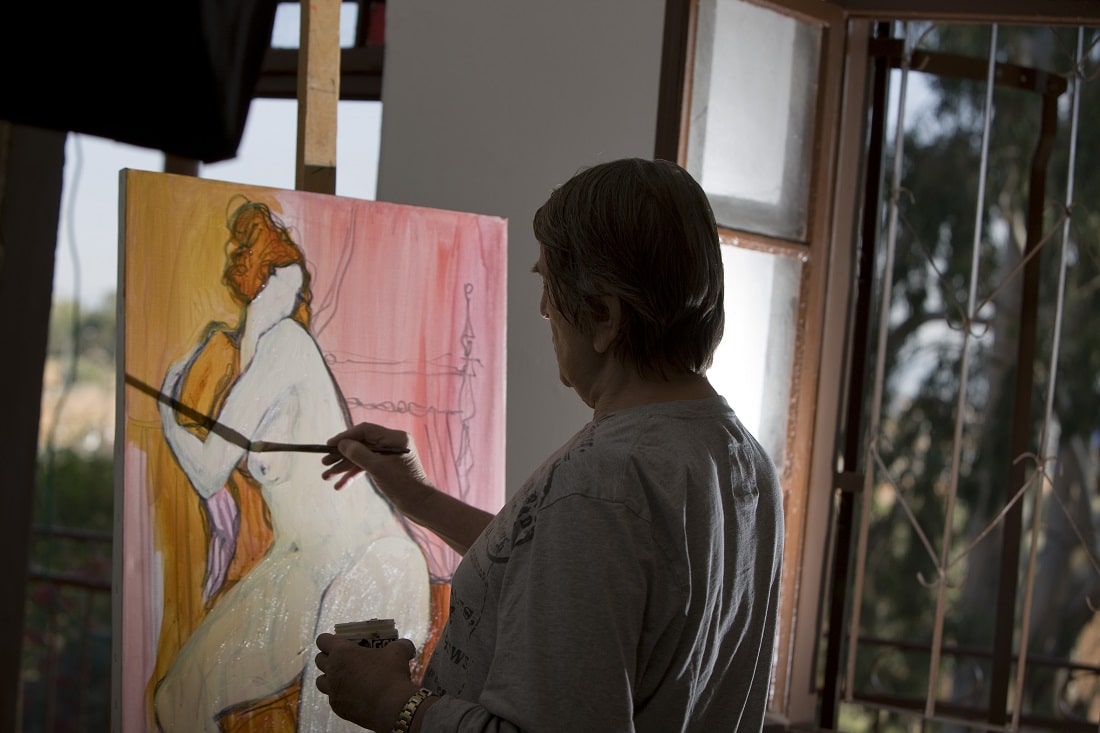
SHAPIRO: The curse of being an artist is love all over the world. It’s the price you pay. It’s hard for you.
TARKAY: Yes.
SHAPIRO: Well, I can speak on behalf of all those people and thank you. Thank you for continuing to make art. Thank you for being here with us. Thank you for telling us so much about your work. And your soul. It’s very precious for us.
TARKAY: I am very happy to do it. A little ashamed, but I am happy.
To collect the artwork of Itzchak Tarkay, attend one of our exciting online auctions or contact our gallery consultants at 1-800-521-9654, ext. 4, or sales@parkwestgallery.com




